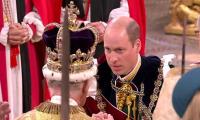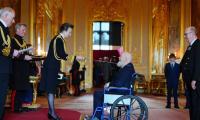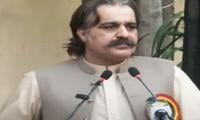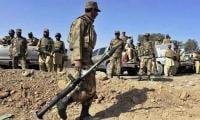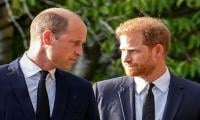ISLAMABAD: While comparing defence spending of India and Pakistan, the World Bank (WB) on Monday highlighted eight-point reform agenda for entering in the bracket of upper middle income countries with size of economy jacking up to $2 trillion in the next 28 years till 2047. Under 100-year programme targets till 2047, Pakistan will have to restrict its population at 312 million for maximising benefits for human resource.
The WB’s Country Director, Illango Patchamuthu, stated on the occasion that Pakistan was standing at crossroads as two scenarios exist where there is bright prospects reaching size of the economy to $2 trillion but the population will have to be curtailed at 312 million. By achieving this scenario, he stated that Pakistan’s GDP per capita could touch $5702 in next 28 years till 2047.
In case of status quo and business as usual, he said that Pakistan’s economy could go up to $1 trillion with population size of 376 million but the GDP per capita would be standing at just $2110 by 2047.
The WB launched report titled “Pakistan@100: Shaping the Future” on Monday that states that India’s absolute defence expenditure was seven times higher than Pakistan and the gap on this account was persistently on rise since decade of 70s but the gap widened at more pace in the aftermath of 1999. About Pakistan’s defence spending, the WB stated that Pakistan spends almost 70 percent of its revenues on military and interest spending. The data shows that India spends almost 58 percent of its revenues on military, Turkey less than 40 percent, China 20 percent and Bangladesh 20 percent.
The WB states that strained relation affect trade, opportunities for regional cooperation and countries domestic policies. The WB states that Pakistan’s spending on its military detracts from how much it can spend on other development priorities which fewer resources available to meet its development needs than peer countries. The smaller size of the economy vis-à-vis India (and the growing gap) means that although as share of GDP military spending is significantly higher than India’s in absolute terms it is vastly outspent by India.
Pakistan urgently needs to invest more and better on its people if they are to be richer, better educated, and healthier when the country turns 100 years old in 2047, says a new report by the World Bank.
Launched today at the Human Capital Summit, the report, Pakistan@100: Shaping the Future, urges Pakistan to overcome its boom-bust cycles through a deep-rooted economic transformation. It recommends the essential reforms Pakistan needs now to accelerate and sustain growth. This means increasing and improving human capital investment, boosting productivity, promoting social and environmental sustainability, ensuring good governance, and leveraging its location to connect more with neighbours and the world beyond, says the report.
“There are steps Pakistan can take today to boost its economic performance and thereby ensure a better future for its people,” says Hartwig Schafer, World Bank Vice President for South Asia. “These steps are ones that other countries have taken to open up their business sectors to competition and innovation and laying the foundations for growth, investment, and good jobs.” He said that Pakistan needs to reduce state interventions to achieve vibrant growth prospects and made it clear that the country would have to tackle sensitive issues by removing the economy from capture of elites.
The forward-looking report argues that Pakistan’s greatest asset is its people – a young population of 208 million. This large population can transform into a demographic dividend that drives economic growth. To achieve that, Pakistan must act fast and strategically to: i) manage population growth and improve maternal health, ii) improve early childhood development, focusing on nutrition and health, and iii) boost spending on education and skills for all, according to the report.
“Because the next generation is meeting only 40 percent of its potential it means that Pakistan is foregoing much of its economic growth, but this can change if women’s potential is unlocked,” says Annette Dixon, World Bank Vice President for Human Development. “When women and girls are empowered to make their own decisions, they stay in school longer, they start families a little later, have fewer children, contribute more to the economy, and invest more in their children. It’s a virtuous circle that’s good for families and good for the whole country.”
To increase investment levels, the report recommends ways to make it easier to do business in Pakistan, as well as reforms to tax policy and administration to increase fiscal space and public investment in the country’s top priorities. Strong governance will be crucial to implement a difficult set of reforms.
The report discusses the key elements of a strong governance environment, including the need for a stronger civil service.
“Accelerating and sustaining Pakistan’s growth over a 30-year period is ambitious, but possible,” says Illango Patchamuthu, World Bank Country Director for Pakistan. “Many other countries have achieved economic transformations within a generation with the right set of policies. The World Bank is committed to working with the government of Pakistan and other stakeholders in the country to advance the necessary reforms, so that Pakistan can significantly increase growth and sustain it, so it is an upper middle-income country by the time it celebrates its centenary.”
Richard Crowder, Deputy High Commissioner UK said that Pakistan would have to make among hard choices as Pakistan would have to boost investment and exports for achieving growth on sustained basis. He said that the low tax base was making it hard for the country to spend on human development. The choices, he said, matters and clear-cut road map was critical for achieving the desired results.
Federal Minister for Planning Khusro Bakhtiyar said that the PTI government was willing to undertake difficult reforms as with status quo approach the GDP growth in terminal year of PTI tenure in 2023 could touch 4.7 percent of GDP under five-year plan.
“If we do focus on reforms, the growth could touch 6.7 percent by fiscal year 2023,” he added. He said that flexible exchange rate would be in place in order to remove bias against exports. He made commitment that the population growth would be brought down from 2.4 percent to 1.5 percent on per annum basis. The savings to GDP ratio would be increased from 10.7 percent to 17 percent of GDP over the next five years, he added.
“Hopefully we will put Pakistan back on the path of reforms,” he maintained. In the panel discussion, Punjab former finance minister and MNA from PML-N Ayesha Ghous Pasha said that Pakistan had passed through boom bust cycle as growth went up when foreign aid poured in but it could not sustain long keeping in view historic economic data of last 30 to 40 years.
IST would launch a student cube satellite ‘ICUBE-Qamar’ into the lunar orbit aboard China’s Chang’E-6 Mission...
PTCL said that it is “diligently examining this order within the applicable legal and regulatory framework”.
Russia’s defence minister ordered a hike in weapons production and said deliveries needed to be faster for the war...
US accused Russia of violating international chemical weapons ban by deploying the choking agent chloropicrin against...
Establishment Division started process for pre-qualification on headhunting firms to hire experts and professionals in...
Terrorists launched an attack at the Hazrat Umar Farooq Jhangi check-post near Taunsa Sharif on Tuesday midnight
